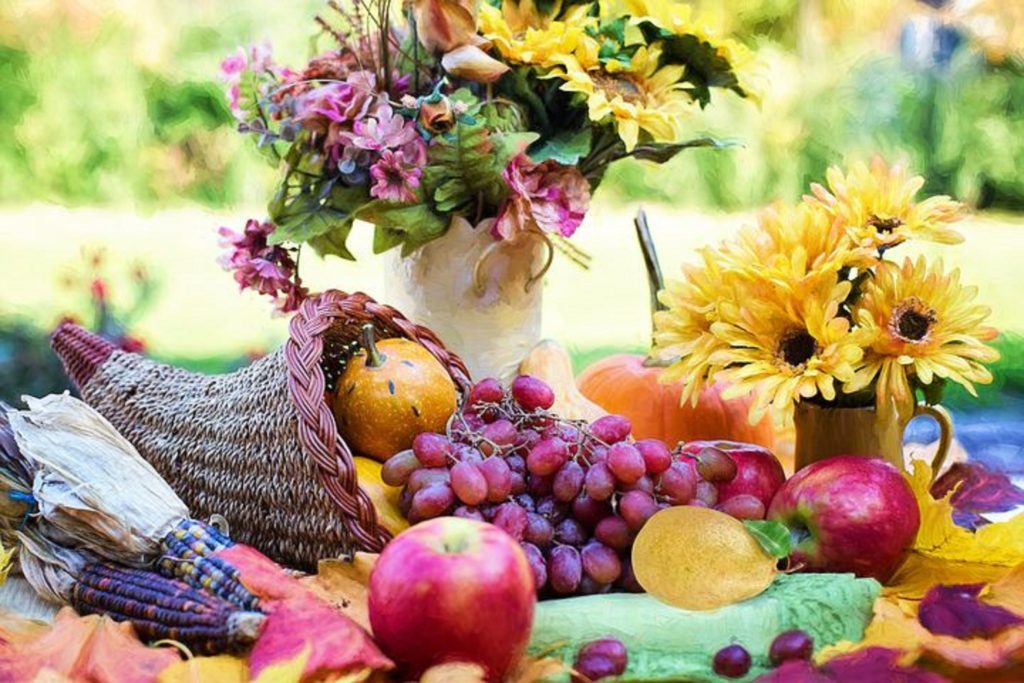“Thanksgiving Day comes, by statute, once a year; to the honest man it comes as frequently as the heart of gratitude will allow.” – Edward Sandford Martin
In the midst of the Civil War in 1963, President Lincoln proclaimed a national Thanksgiving Day to be held every November. Since then, Thanksgiving holiday has been a fixture of late November. Giving thanks as a nation can be traced back to 1789 when George Washington called upon Americans to express their gratitude for the conclusion of the country’s war of independence. His successors John Adams and James Madison also designated days of thanks during their presidencies. In the mid-1930s, Franklin D. Roosevelt moved the holiday up a week in an attempt to spur retail sales during the Great Depression. He later signed a bill in 1941 making Thanksgiving Day the fourth Thursday in November.
Thanksgiving Day Traditions:
- Thanksgiving celebration has lost much of its original religious significance and now centers on cooking and sharing a bountiful meal with family and friends.
- Turkey, corn, bean, pumpkin and cranberry are synonymous with the Thanksgiving holiday.
- One of the most recognizable symbols of Thanksgiving is the cornucopia, also called horn of plenty. It’s a decorative motif that symbolizes abundance.
- Parades have also become an integral part of the holiday in cities and towns across the United States. Since 1924, the Macy’s Thanksgiving Day parade is the largest and most famous.
- Many churches still hold a special Thanksgiving Day service centered on giving thanks to God.
- At mealtime, many families observe the ritual of going around the table to express what each member is thankful for. Many family members will travel long distances to attend this yearly reunion.
- The President of the United States traditionally pardons a live turkey, which means the turkey will live on a farm without threat of ever being eaten.
- Some will observe the holiday through charity work. Common charitable activities include serving and preparing meals at homeless shelters and soup kitchens, organizing food and clothing drives, and participating in community outreach programs.
- Shopping the day after Thanksgiving dates back to the late 1920s and the term “Black Friday” was coined in the 1960s to mark the kickoff to the Christmas shopping season. In the U.S., most major retailers open very early, offer promotional sales, and more recently some retailers are open overnight.
Thanksgiving day symbolizes the joy of loving, caring and sharing. It’s a time for togetherness and merry making and prompts us to focus on what we’re grateful for. In honor of Thanksgiving, take every opportunity to express gratitude to others and to be mindful of all the good in your life. A transformation often occurs when we learn to shift our thoughts from the negative to gratitude.
“I would maintain that thanks are the highest form of thought and that gratitude is happiness doubled by wonder.” – G.K. Chesterton
Found value? Feel free to share!!
To Your Success,
Althea
Althea A. McLeish Wilson, RN, MSN
Promoting inner health & outer beauty!
Helping you thrive, not just survive!!
PS. Inner Health & Outer Beauty Store: Health & Wellness with Althea♦
PPS. Did You Find This Helpful? If so, please feel free to share!! Leave a comment or contact me at althea@altheamcleish.com.
Reference:
The History of Thanksgiving – History.com♦

